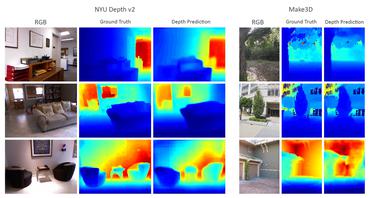Matching Adversarial Networks
Generative Adversarial Nets (GANs) and Conditonal GANs (CGANs) show that using a trained network as loss function (discriminator) enables to synthesize highly structured outputs (e.g. natural images). However, applying a discriminator network as a universal loss function for common supervised tasks (e.g. semantic segmentation, line detection, depth estimation) is considerably less successful. We argue that the main difficulty of applying CGANs to supervised tasks is that the generator training consists of optimizing a loss function that does not depend directly on the ground truth labels. To overcome this, we propose to replace the discriminator with a matching network taking into account both the ground truth outputs as well as the generated examples. As a consequence, the generator loss function also depends on the targets of the training examples, thus facilitating learning. We demonstrate on three computer vision tasks that this approach can significantly outperform CGANs achieving comparable or superior results to task-specific solutions and results in stable training. Importantly, this is a general approach that does not require the use of task-specific loss functions.
PDF Abstract



 Cityscapes
Cityscapes